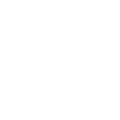Sprint Agile Maturity Assessment - Agile Capability Inventory
The agile capability inventory is an agile maturity assessment tool. This instrument can be used as a model to help agile teams learn and improve in a structured way. This Agile maturity model is based on the 12 principles of the agile manifesto. The agile manifesto was written in 2001, to keep this competency model relevant to today, we have interpreted some of the manifesto principals in a way that is more relevant to today.
This competency inventory is a structured approach for setting achievable targets and measuring progress. Each question also provides an education opportunity.
The Agile Capability Inventory is also known as: Agile Principles Competency Inventory, Agile Principles Maturity Assessment, Agile Principles Maturity Model, Agile Principles Health Radar, Agile Principles Measure and Grow Assessment, and Sprint Agile Maturity Model.
Delivery model: facilitated
Duration: 2 hours
Frequency: quarterly
Process:
- Book a single 2 hours time block with the entire team. Make sure the product owner, scrum master, or the delivery lead (if applicable) attend this session. (Note it is pointless to run this session without the product owner and/or other leadership roles in the room as quite a large number of questions are targeted to them)
- Download the questionnaire and send it to all the team members in advance (including the product owner and other leadership roles attending the session)
- On the day of the session the facilitator will go through the questions one by one and the team members use planning poker to vote the answer for each question. If run remotely online tools such as https://www.planitpoker.com/ can be used for this. If run in person use physical planning poker cards.
- Once the facilitator reads the question, all members show their cards depicting the choice they think best represents their current state. We vote first and then discuss to avoid anchoring bias. This activity is just like the estimation planning poker done in Scrum.
- Different people would typically choose different answers for the same question, so after voting we will discuss and agree on what choice should be selected. The allowed votes are 1,2,3,5,8 as per the Fibonacci sequence. 8 is the most mature option depicting highest competence. 1 is the least maturity level depicting lowest level of competence.
- Once agreement is reached for every question the facilitator notes the number in a spreadsheet. Then we move to the next question.
- The above process is timeboxed at 1.5 hours. Once we have rated all the questions we have 30 minutes to select an item and brainstorm how to improve it.
- Once we have rated the 12 questions, the facilitator will quickly create a radar diagram based on the results in the spreadsheet and demonstrate it on the screen (please see examples below).
- Then the team picks one of the 12 principles to improve. and they will target a 1 step improvement for that item timeboxed to 3 months. For example if thy are at level 2 they can target getting to level 3, or if they are level 3 they will target getting to level 5, or if they are 5 they will target getting to 8.
- The team brainstorms actions how to get to the next level target. The facilitator needs to ask the team, “what actions do you need to take to move to the next level up?” Once the team comes up with improvement actions, they commit to making sure these actions get done in the next 3 months. Note that the product owner (and other relevant leaders) will also attend the session and they share this commitment with the team.
- We book another time in 3 months to repeat this session.
Download the questionnaire here: Agile Capability Inventory
This instrument has been calibrated across multiple teams of various maturity. Please see below examples of 4 teams of various maturity.
Notes:
- It would be almost impossible to neatly fall into one of the answers. Typically the team will have a little bit of one option and a little bit of anther option. So in this case you will have 2 choices:
- To select the option which best describes your current state. Even though it may not be 100% accurately describing your current situation, but out of all 5 options it is the one closest to reality.
- To select the number in between the two options best describing your current state. For example if your state is somewhere in between option 2 and option 3, you may select 2.5 as your score for that question. Or of your state is somewhere in between 5 and 8 you may select a 6 or a 7 as your score for that question.
- Make sure we are taking note of the current state, as it is in reality not as it is supposed to be.
- Improvements to the grade on some of the items may be be beyond the team’s sphere of influence. In that case the team may choose another item to improve or they can think creatively how to increase their sphere of influence to improve those item.
- Even though only 1 item can be selected for improvement over the next 3 months, sometimes as a side effect of improving that one item, other items may also improve.
- The facilitator should not influence the decisions of the team. The facilitator may only clarify the intent of the questions and provide expert guidance.
- Typically the product owner (or other leaders) realise in this session that they have been promoting wrong behaviours in the team. This is a great opportunity to open certain cans of worms and start having certain difficult conversations. If the session is facilitated by a skilled coach, this is a great opportunity to let conflict or supressed negative feelings surface. This is a perfect venue for facilitating difficult conversations that people have been avoiding. If you foresee difficult conversations in this session, please make sure to book extra time, perhaps 3 hours instead of 2 hours!
- This instrument is created as a learning aid for agile teams to help them improved and must not be used to manage performance of teams. It provides a vision, a north star, and a stepped ladder for improvement targets. Note that by using this model you are agreeing not to use this model to manage team performance.
- If you have any questions or would like to clarify the process or the 12 questions, please contact us and we will reply to your questions as early as we can.
Important – Conditions of use:
- This model is free to use but attribution to Sprint Agile or Arash Arabi is required.
- This model must not be used to manage team performance.
- If the team decides they don’t want to use this model any more, you must respect their decision and not force it on them.
Copyright Sprint Agile. All rights reserved. Free to use but attribution is required.
This tool is not under Creative Commons Licence. If you reuse, reference, or use this model as inspiration for your own work, you must attribute and reference Sprint Agile.





